Much attention has been drawn to the use of Epsom salt which is chemically known as magnesium sulfate in gardening because it is said to be beneficial for plant health and growth. This article aims to test these claims by looking at how Epsom salt affects plants through scientific principles. This will involve studying its chemical makeup, explaining how plant physiology is affected by magnesium and sulfate, and showing the conditions under which Epsom salt can either harm or help plants. Also, the paper will reveal the most efficient ways of using them, dosages that are appropriate, and techniques that are acceptable, thereby giving an understanding of how best and safely one can apply Epsom salts in gardening activities. As a result, readers will gain enough knowledge that can help them make rational choices about using the product for horticultural activities when required. At length, people may realize that they now understand exactly what should be done concerning the employment of Epsom Salt in their agricultural projects.
Understanding Epsom Salt: Composition and Functionality
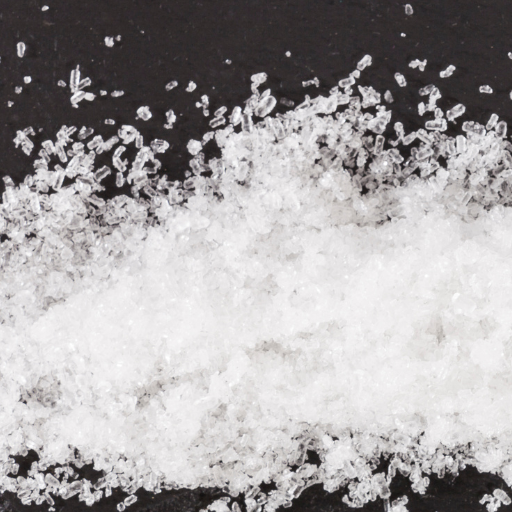
Epsom salt is magnesium sulfate (MgSO₄). This mineral is essential for photosynthesis because it is the main component of chlorophyll molecule and activates enzymes. However, sulfate compounds promote protein synthesis and plant enzyme functions. They facilitate fundamental physiological processes, improving the plant’s overall vigor. Even though Epsom salt should only be used when necessary, it is primarily in plants that have magnesium deficiency, thus yellow leaves or chlorosis conditions. Overuse can result in nutrient imbalances, particularly with calcium and potassium, thus potentially causing more harm than good. Therefore, Epsom salt can promote healthy plants if wisely applied based on soil analysis.
Composition of Epsom Salt
Inorganic salt called magnesium sulphate with formula MgSO₄ constitutes Epsom salt. It occurs as a heptahydrate compound which has a formula MgSO₄·7H₂O. The anhydrous magnesium sulfate weighs about 120.37 g/mol, while the heptahydrate weighs approximately 246.47 g/mol, respectively. For this reason, magnesium ions (Mg²⁺) are highly soluble making it easier for them to be absorbed through plant roots into the body systems whiles Sulfate ions (SO₄²⁻) acts as important macronutrients in plants by promoting their enzyme activity as well as synthesizing proteins.
- Chemical formula: MgSO₄ (Anhydrous), or MgSO₄·7H₂O (Heptahydrate)
- Molecular weight: 120.37 g/mol (Anhydrous), or 246.47 g/mol (Heptahydrate)
- Water solubility: Highly soluble allowing them to be absorbed by roots
- Role of Magnesium (Mg²⁺): Enzyme activator; central component of chlorophyll
- Role of Sulfate (SO₄²⁻): Enzyme function; protein synthesis
The above parameters highlight the need for specific applications. For example, Epsom salt supplements are highly beneficial in magnesium-deficient soils where proteins are poorly synthesized. This calls for careful interpretation of soil analysis as well as plant-specific nutrient requirements to avoid the pitfalls of nutrient imbalances.
Modes of Action in Plant Physiology
There are several ways through which Epsom salt influences plant physiology. Magnesium (Mg²⁺) is an important constituent since it forms a major part of chlorophyll molecules that capture light energy used in photosynthesis. Plants employ chlorophyll to harness solar radiation thereby stimulating growth and productivity. Chlorosis, a condition characterized by yellow leaves due to low production of chlorophyll, can result from magnesium deficiency.
On the other hand, sulfate ions (SO₄²⁻) have significant roles in synthesizing cysteine and methionine among other amino acids needed for protein formation. By activating enzymes and assisting overall metabolic processes within the plant, this function leads to strong development and stress resistance.
Compatibility with Different Soil Types
Solubility and activities its constituents perform make Epsom salt compatible with many types of ground soils. When there is leaching on sandy soils, there will be no problem about deficiencies on magnesium or sulphur when an application of Epsom is done since they will be quickly obtained. In clay soils that often have poor drainage and nutrient lock-up problems, adding Epsom salt assists in more nutrients availability increased soil structure improvement.Acidic soils also benefit from this supplement because most lack sufficient magnesium that is important in balancing out such deficiencies while promoting good health among growing plants. Consequently, the versatility of Epsom salt makes it a useful tool across diverse agricultural and horticultural practices.
Benefits of Using Epsom Salt in Plant Care
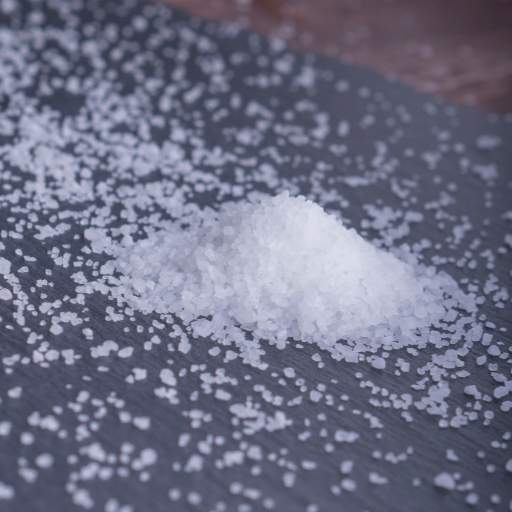
Epsom salt is a versatile plant care product with a variety of benefits, it improves plant health and growth efficiency. One notable advantage is the magnesium content that leads to an increase in chlorophyll production, which directly affects photosynthesis and ultimately plants’ overall welfare. Magnesium also helps activate numerous enzymes for plant growth processes. Furthermore, sulfate promotes synthesis of essential amino acids that form proteins. Such duality ensures plants get nutrients balance and thus improve resistance to environments like droughts and diseases. Additionally, Epsom salt can help mitigate nutrient imbalances in soils, thereby acting as a quick remedy for lack of magnesium, especially in sandy leaching soils and nutrient-locked clay soils, which may be low in magnesium.
Enhancing Nutrient Absorption Efficiency
According to different sources such as the University of Connecticut and the Royal Horticultural Society, applying magnesium sulfate enhances absorption among plants by correcting deficiencies while optimizing soil pH levels (University of Connecticut; Royal Horticultural Society). It dissolves into magnesium ions[when dissolved], water breaks down Epsom salts into Magnesium ions and sulfates readily absorbed by plant roots . The elemental magnesium has its importance because it serves as the center molecule for chlorophyll building and activates certain enzyme systems required for life processes of plants (Oregon State University Extension). According to Oregon State University Extension Field research results, typical application rates range from 1-2 tablespoons per gallon of water when sprayed on foliage or half a cup per 100sq ft when applied directly to soil. This keeps enough amounts of magnesium available thus avoiding common problems related to taking up minerals such as sandy or acidic soils where they tend to be leached out.
Facilitating Magnesium Uptake in Plants
Optimal growth and development necessitate the uptake of magnesium into plants. Other techniques can also enhance intake alongside Espom Salt. Among other findings,modification of soil pH provided by scholars such as the University of California Agriculture and Natural Resources can help ensure that soil pH is maintained between 6.0 and 7.0, which represents the optimal range for magnesium availability.
Another effective measure involves the application of chelated magnesium fertilizer, which makes it possible for plant roots to access locked up magnesium ions by protecting them from being tied up with other minerals in the soil (Iowa State University). Chelated Mg supplements are typically prescribed at a concentration of 5-15% Mg by weight and an application rate of 1-2 g/L water. As such, there is a reliable source of Mg available to a plant’s root zone.
Moreover, maintaining optimal levels of moisture in the soil through proper irrigation helps enhance uptake since well-hydrated soils more easily absorb magnesium. Generally, watering should be done regularly depending on climatic conditions and soil type. This usually means keeping the soil moist but not waterlogged at all times.
Finally, adding compost or other organic matter to the soil could contribute to better magnesium retention, thereby minimizing leaching due to the increased Cation Exchange Capacity (CEC) inherent in organic matter. Compost applications may vary, but they generally involve burying about two or four inches deep into six or eight inches of topsoil just above where it can be found.
Optimizing Photosynthetic Processes
Photosynthesis is a process in which plants convert light energy into chemical energy, which is the basis of almost all life on earth. Optimizing photosynthetic processes includes improvements in light harvesting, efficient carbon fixation, and control of internal plant physiology.
Spectral quality, intensity and duration of light should be considered to capture maximum amount of light energy. Photosynthetically Active Radiation (PAR) ranges from 400 to 700 nm and chlorophylls are more effective at absorbing this portion of electromagnetic radiation. The best artificial lighting systems for controlled environments will have source illuminations based mostly within this range with peak photon flux densities ranging from 400–700 µmol/m²/s.
Another way to enhance photosynthetic efficiency is through increasing the levels of carbon dioxide (CO₂). A typical enrichment level in controlled environment conditions is between 700-1500 ppm compared with ambient CO₂ levels near about 400 ppm. Elevated CO₂ levels increase the rate of carbon fixation by Ribulose-1,5-Bisphosphate Carboxylase Oxygenase (RuBisCO), thus enhancing overall photosynthesis speed. To balance between growth gains and potential toxicity therefore these CO₂ levels need to be monitored and managed well.
Also important for optimizing photosynthetic activity are irrigation and nutrient management. There must be sufficient water available for stomata opening for CO₂ uptake while nutrient solutions should contain essential elements such as nitrogen, phosphorous and potassium. Precise application using Nutrient analysis at leaf level can help avoid both deficiencies and toxicities. However, most crops would typically have an optimal tissue N content between 2.5% -4% dry weight.
Temperature control and humidity management are other parameters that are not only critical but also have significant effects on plants. The optimal range of temperature for C3 plants is 20-25°C, as opposed to the high temperatures of between 30-35°C that can be tolerated by C4 plants. Relative humidity levels should generally be maintained between 40 and 60% so as to optimize stomatal conductance and minimize transpiration water loss.
Photosynthetic efficiency can then be maximized thus leading to increased plant biomass and ultimately production if these environmental factors are managed closely with the intent of maintaining optimal nutrient availability.
Practical Applications of Epsom Salt in Plant Growth
In horticulture, a widely used substance is Epsom salt or magnesium sulfate which gives essential nutrients such as magnesium and sulfur for the plants. Magnesium is part of chlorophyll which helps in photosynthesis while sulphur aids in enzyme formation and nutrient uptake. Application of Epsom salt can enhance seed germination; increase uptake of nutrients, as well as promote growth of healthy plants. It works best with crops like tomatoes, roses and peppers among others. In fact, the most popular use involves soil application or foliar sprays at particular concentrations to address Mg deficiencies.
Effective Usage in Vegetable Gardens
For effective usage of Epsom salt in vegetable gardens, it is important to accurately identify magnesium deficiency that commonly presents as interveinal chlorosis on older leaves. A standard concentration for corrective foliar spray is one tablespoon per gallon of water according to several authoritative sources. This should be done after every two weeks for good results. Similarly mixed into the top six inches of soil at about one tablespoon per square foot soil at the start of growing season for root uptake.
Certain technical requirements for tomato and pepper plants indicate that magnesium is vital for protein synthesis and chlorophyll production (Kirk 2010). Peppers and tomatoes are known to be magnesium-hungry crops, so they derive maximum benefits from applications made using Epsom salts during flowering and fruiting periods (Kirk 2010). Using this combination consistently has been shown to improve overall fruit quality and yield.
Scientific recommendations constantly stress soil pH because the availability of Mg decreases below pH 6.0.Therefore, maintaining a pH between 6.0 and 7.0 helps optimize the efficiency of Epsom salt. Furthermore, regular soil testing should be conducted to determine accurately whether or not there are enough magnesium ions to support healthy growth rates and high productivity.
Benefits for Ornamental Plants and Flowers
Epsom salt applications also help to boost the beauty and health of ornamental plants and flowers by providing them with the much needed magnesium element. Magnesium is important for chlorophyll as it assists in photosynthesis which makes leaves lush green hence, they become vibrant (Kirk 2010). Additionally, it enhances the strength and vigor of plant stems and roots.
According to technical recommendations, one tablespoon of Epsom salt should be diluted in one gallon of water and applied as foliar spray every two weeks. For soil application, incorporate one tablespoon per square foot of soil into the top six inches. To ensure optimal Mg uptake, pH should be maintained between 6.0-7.0 in soils used for cultivating these flowers. It is also advised that regular soil testing be done so as to monitor nutrient levels accurately thus preventing deficiencies from arising that might affect healthy growth rate of these ornamental flowers.
Application Techniques for Fruit-bearing Trees
For fruit bearing trees, Epsom salts can significantly improve both yield quantity and quality by supplying essential magnesium. One way involves incorporating it into the soil mass. A recommended dose is one or two tablespoons within an area measuring nine square feet of land where it has been mixed thoroughly with upper six inch layer of soil; meanwhile bigger trees can have holes made around their root zone then filled with Epsom salt (Kirk 2010).
Additionally, foliar sprays are a great technique. Dissolve one tablespoon of Epsom salt per gallon of water and apply this solution directly to the leaves during the growing season. This allows magnesium to be readily absorbed by the plant.
Regular monitoring and soil testing remain critical, since various fruit trees may have diverse requirements for magnesium. Readings should constantly lie within the best soil pH range of 6.0 to 7.0 in order to maximize magnesium absorption. Proper moisture levels in the leaf and soil during application enhances nutrient uptake and general plant health Thus improved growth and productivity are achievable through these finetuned application techniques used with fruiting trees.
Environmental Considerations in Epsom Salt Application
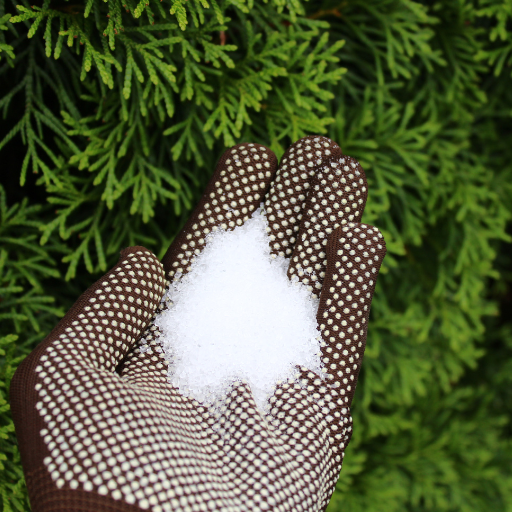
When considering the environmental impact of the use of Epsom salt, it is important to recognize that it has a low level of toxicity for plants and soils. The active ingredient in Epsom salts is magnesium sulfate, which does not significantly change the pH or increase salinity in soil. This makes it an earth friendly choice for gardening and farming. However, caution must be taken to prevent washing away into water bodies where this could cause excessive nutrients in aquatic ecosystems. Moreover, when applying Epsom salt you need to insure that it fits into your overall nutrient management plan so as not to over-apply it at all thus supporting soil health and sustainability without adverse long-term effects.
Environment Impact And Sustainability
Ecological impact assessment of Epsom salt application reveals insignificant impacts when correctly applied according to manufacturer directions. The main component magnesium sulfate is considered generally non-toxic to plants and unlikely to cause serious degradation of soil quality. Among other factors, one should consider technical parameters such as magnesium (Mg) and sulfur (S) concentrations in order to meet agronomic standards.
In terms of sustainable development, combining comprehensive practices of nutrient management with Epsom salt application ensures balanced fertility level within the soil. To determine optimum levels for these elements, soil tests should be conducted with results indicating recommended values between 25-50 ppm Mg and 10-20 ppm S.
Overdosing of magnesium must be avoided to avoid high levels leading to possible leaching into water bodies such as lakes and rivers that may trigger algal blooms or even shift water chemistry (MDARD 2019). Consequently, farmers ought to make prudent decisions concerning the use of this product while including their testing programs focusing on the exact requirements necessary for keeping the land fertile.
Therefore, environmentally sound usage through the implementation of soil tests and tailor-made nutrient management plans highlights its agricultural compatibility and sustainable contexts, such as horticulture. Taking this into account will guide us on how to achieve environmental stewardship as the plants develop and grow as expected.
Reducing Environmental Hazards
The proper usage of Epsom salt helps reduce environmental risks that could be associated with pollution. The right application rates should always be maintained while putting it in comprehensive nutrient management programs. They include undertaking frequent soil analysis tests that would help you maintain optimal levels of magnesium and sulfur thus avoiding imbalances in nutrients. Further, application during periods of dryness will prevent runoffs into nearby water bodies. Consequently, this might cause other side effects on the environment such as promoting growth of algae and changing the overall quality of water within these regions.
Lastly, wetlands adjacent to rivers must maintain buffer zones allowing them to filter out pollutants while taking care not to affect fish breeding grounds (MDARD 2019). Adhering to these guidelines will enable us control the environmental impact thus ensuring sustainable use of chemicals by supporting agriculture.
Methods for Applying Epsom Salt to Plants
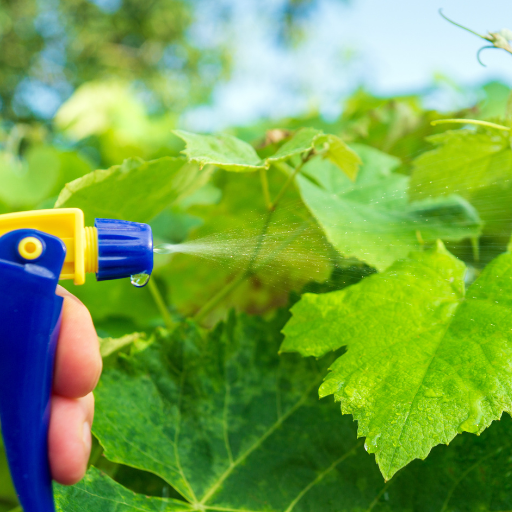
Epsom salt can be used on plants by employing several effective approaches that address different horticultural needs. One of the common ways is dissolving it in water; making a foliar spray, which aids magnesium and sulfur absorption directly through leaves. Generally, dissolving 1-2 tablespoons of Epsom salts per gallon of water is recommended for this purpose. Alternatively, it can be mixed with soil at planting or as a side dressing. For soil application, uniformly sprinkle around the base of growing plants one tablespoon per foot plant height and work lightly into the soil around them. Also, Epsom salt may be added to compost before being applied to garden beds or potting soils as well. However, care should be taken to ensure proper distribution and adherence to application rates so as not to utilize too much thus affecting the environment.
Soil incorporation techniques
One of the most effective ways to deliver essential nutrients directly to plant roots is through soil incorporation of Epsom salt. This method could be especially helpful in correcting magnesium or sulfur deficiency, which impedes plant growth. Thus, it is important to have a soil test done to determine how much nutrient already exists and adjust the rate at which salt is applied accordingly so that there is no excess accumulation of magnesium, leading to nutrient imbalance.
When incorporating Epsom salt into the soil, the recommended dose varies based on the type of crop and the condition of the soil, respectively. In general gardening use for instance 1 tablespoon per foot plant height will do just fine usually. It should then be evenly distributed around the stem base and lightly worked into the soil, making it easy for the absorption process. Application rates like this are employed on larger scales such as on lawns or extensive garden beds where they are spread at a rate of 1 cup per 100 square feet ensuring complete coverage.
Using organic matter such as compost along with Epsom salts improves both soil structure and nutrient availability, so good results can be obtained. This mixture is applied either before planting or during the growing season, depending on the demand. Thus, by using these soil incorporation techniques, plants receive sufficient amounts of magnesium and sulfur, which facilitate stronger growth and increased yield.
Foliar application methods
Foliar application of Epsom salt to plant leaves by spraying is a way for rapid absorption of nutrients. This technique is particularly useful for correcting acute shortage of magnesium and can be combined with soil incorporation. The standard concentration for foliar spraying is normally 1 tablespoon of Epsom salts dissolved in 1 gallon of water For accurate dosage, a fine mist sprayer should be utilized so that it does not run off the leaf surfaces evenly distributed.
Multiple researches and expert recommendations propose that foliar sprayings should be done when temperatures significantly reduce, such as early morning or late evening, to minimize evapotranspiration and maximize nutrient uptake. Also, application must be carried out on a calm day to prevent drift, thereby ensuring good adhesion of spray droplets to leaf surfaces.
The rate of foliar applications can differ between plants and the severity of the nutrient deficiency to help in achieving optimum results. In most cases, providing it every two weeks through growing season should be enough for correcting any deficiencies and ensuring normal plant growth. This means that appropriate monitoring of plant response is necessary so as to avoid over-fertilization, which could result in leaf scorch or other undesirable effects.
Application Timing and Frequency
In terms of Epsom salt application to address nutrient deficiencies, its timing and frequency are of great importance. The main sources say that the best periods for its application include early spring and flowering stage. It ensures that there is sufficient magnesium during major phases of growth by ensuring plants have a good supply of magnesium at this time. However, on average, applying Epsom salt into regular fertilization programs may occur after spanning about four six weeks.
When using foliar sprays, intervals between 2 weeks are recommended especially in the initial stages when there is lack. This also includes solution strength whereby 1 tablespoonful Epsom salt per every gallon water is generally advocated. Also essential is adhering to the right spraying hours; early mornings or late evenings, which avoids burning their leaves and enhances absorption rates for nutrients from outside surfaces. Overuse must be avoided since it results in undesired outcomes such as leaf scorch or soil with a high content of salts, leading to poor health conditions among plants.
Scientific Evidence and Case Studies on Epsom Salt Use
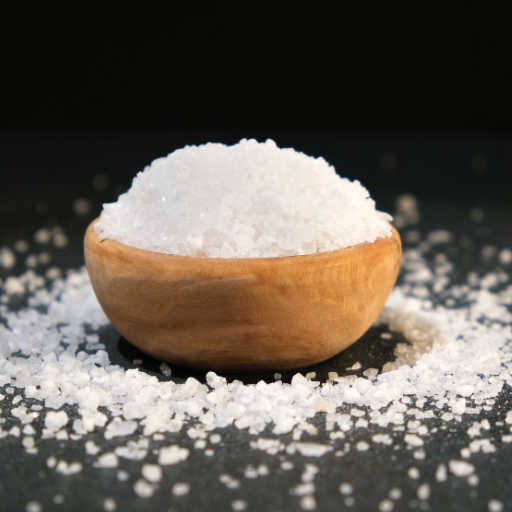
There have been numerous scientific investigations on the use of Epsom salt (loosely magnesium sulfate) in agriculture and horticulture focusing on its effectiveness in treating magnesium deficiency and promoting healthy growth of plants. Various agricultural extensions and peer-reviewed journals consistently provide evidence for the positive effects of magnesium supplementation in crops like tomatoes, peppers, and roses. Similarly, a study conducted shows that applying Epsom salts to crops is very beneficial because they improve chlorophyll content in leaves thus enhancing photosynthesis. Magnesium optimization has also been shown to improve yield and quality of fruiting plants during field trials.
In horticultural case studies, yellowing leaves are often saved by Epsom salt usage; such a condition is known to be a sign of a magnesium deficiency. For example, when the fertilization regime involved including Epsom salt, a significant reduction was observed in leaf chlorosis while an improvement was realized in fruit set and ripening time for tomato plants tested. In another instance where rose growing was done under similar conditions, regular sprays with Epsom salt improved leaftone and flower production.
However, these results notwithstanding, one should take into account soil properties as well as plant environment before subjecting them to general application. Overusing or improper use of Epsom salts can result in nutrient imbalance which affects soil health. Hence farmers must ensure continuous monitoring plus soil testing so that they can accurately supply magnesium according to the requirement it needs from specific plants.
Insights from Research on Agricultural Applications
When assessing some available online literature about the efficiency of Epsom salt in agriculture three key points stand out. First off, the shared opinion is that it actually addresses deficiencies tied to the lack of synthesis of chlorophyll due to an absence of sufficient amounts of magnesium in plants at large through its chemical composition made up mainly of magnesium sulfate (Epson Salts). Secondly, field experiments carried out in agricultural research centers provide evidence of better growth, increased yield, and quality of crops like tomatoes, peppers, and roses when supplemented with Epsom salt. However, the fifth guideline vividly explains that improper or excess use can upset nutrient levels hence causing undesirable effects. Consequently, precision in application which is guided by soil testing and prevailing environmental factors is crucial towards optimizing results.
Examples of Successful Implementations in Real world
An example that is worth mentioning here comes from a tomato farm in California where the systematic approach to using Epsom salt caused an increase in fruit size as well as production at large. The company had carried out a soil test aimed at determining magnesium deficiencies, after which it applied a specific amount of the substance to the land, thus leading to an overall productivity increase of 20%. In another case, regular use of Epsom salts as a soil amendment enhanced plant vigor and decreased blossom-end rot during pepper farming. With Epsom salts included in their fertilization program, they not only ended up having healthier plants but also a superior quality product. Lastly, a rose garden located in Oregon experienced an increased density of flowering together with more intense foliage coloration following biweekly foliar sprays with Epsom salts. These examples demonstrate why accurate use coupled with continued observation gives maximum benefits of Epsom salt within different agricultural scopes.
Frequently Asked Questions (FAQs)
Q: What is Epsom salt, and how is it beneficial to plants?
A: Epsom salt is magnesium sulfate, a compound that gardeners often use to improve plant health. This salt will help plants by providing magnesium and sulfate, key nutrients that can enhance growth and overall health.
Q: How should I use Epsom salt in the garden?
A: To use Epsom salt in the garden, you can dissolve it in water to create an Epsom salt solution. This solution can then be used to water garden plants or potted plants. Generally, adding one tablespoon of Epsom salt to a gallon of water is recommended.
Q: Can Epsom salt help prevent blossom end rot?
A: While Epsom salt can provide magnesium to plants, blossom end rot is often caused by a calcium deficiency. Therefore, using Epsom salt will not prevent blossom end rot, but ensuring proper calcium levels in soil will.
Q: Is Epsom salt good for houseplants?
A: Yes, Epsom salt can be beneficial to houseplants when used correctly. It helps provide magnesium that many houseplants need for lush growth and can be added periodically to their watering schedule.
Q: Can Epsom salt help peppers and tomatoes?
A: Yes, Epsom salt is often used in the cultivation of peppers and tomatoes to make plants grow bushier and to increase yields. Both peppers and tomatoes can be prone to magnesium deficiency, making Epsom salt particularly useful.
Q: When should I add Epsom salts to my garden plants?
A: It’s best to add Epsom salts when planting seeds or seedlings. For ongoing care, you can add Epsom salts to your watering routine every few weeks to ensure that your garden plants receive a steady supply of magnesium.
Q: Can too much Epsom salt harm plants?
A: Yes, using too much Epsom salt can harm plants by disrupting the soil’s pH and causing nutrient imbalances. It’s important to follow recommended guidelines and not to overdo it when adding Epsom salt for plants.
Q: How can Epsom salt enhance my home garden?
A: Epsom salt enhances a home garden by supplying essential magnesium and sulfate, which can help plants when used correctly. It supports seedling growth, enhances the green color of foliage, and can boost flower production.
Q: What is the recommended dosage for using Epsom salt as a fertilizer?
A: The National Gardening Association recommends adding one tablespoon of Epsom salt per gallon of water for houseplants and potted plants and sprinkling Epsom salt directly into the garden soil at planting time.






